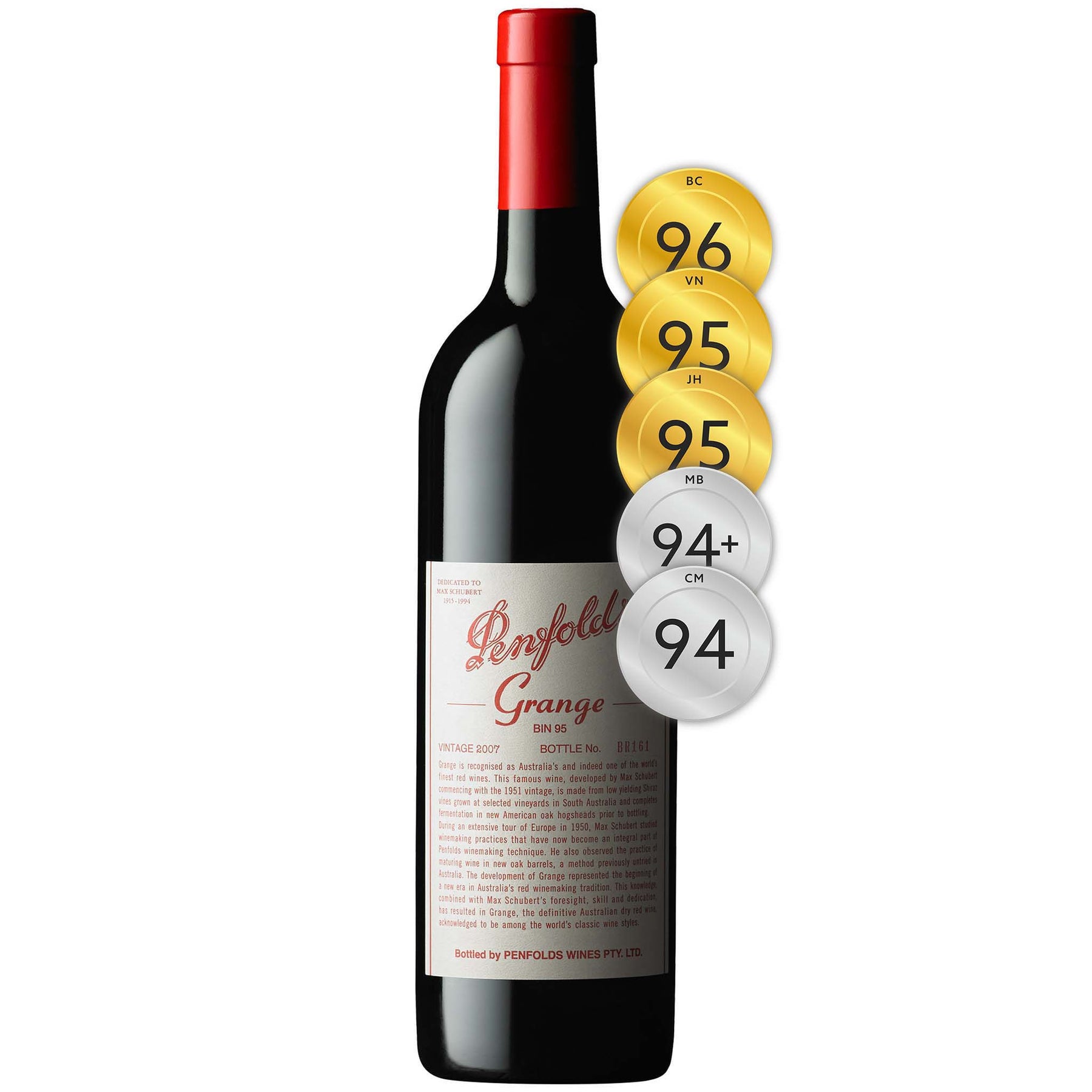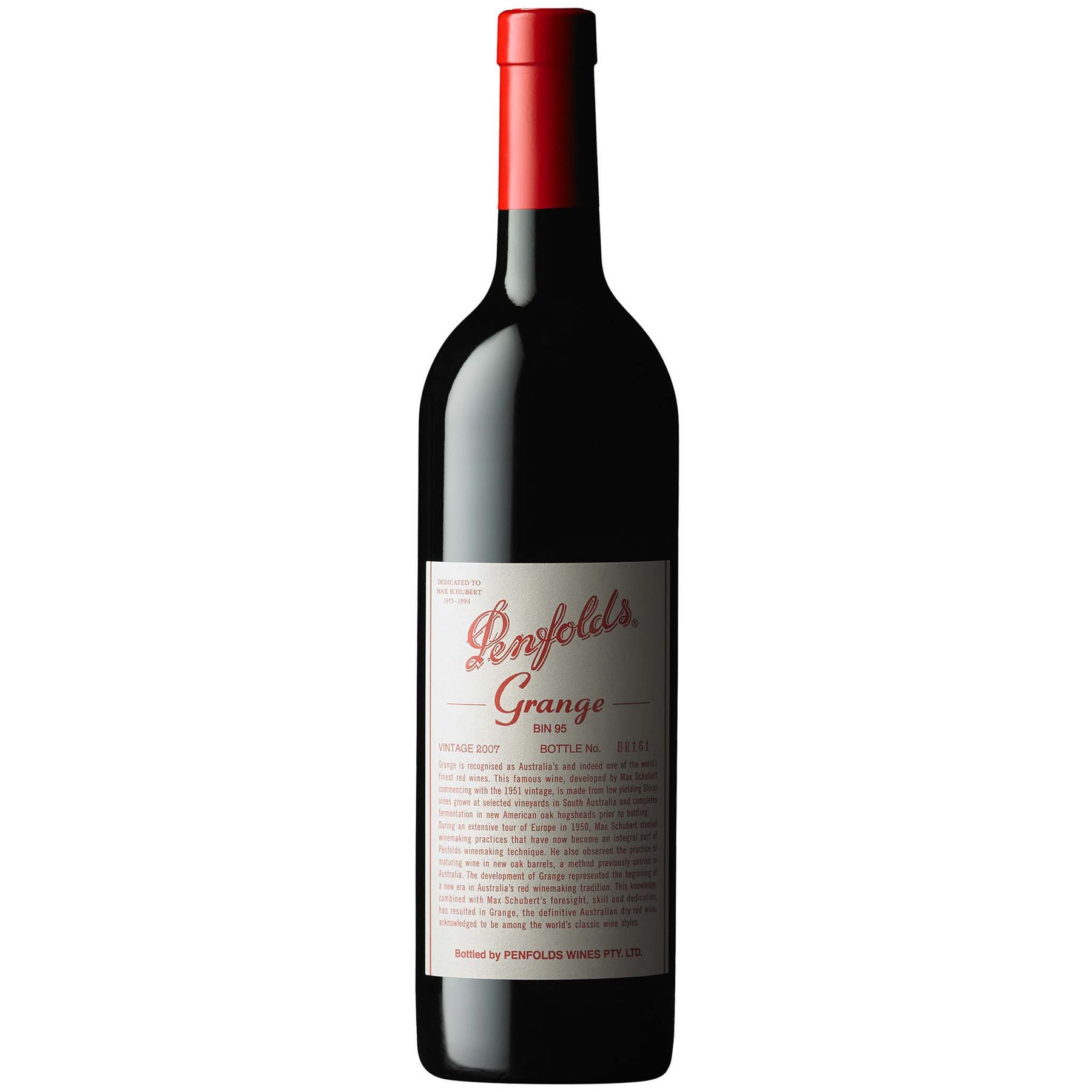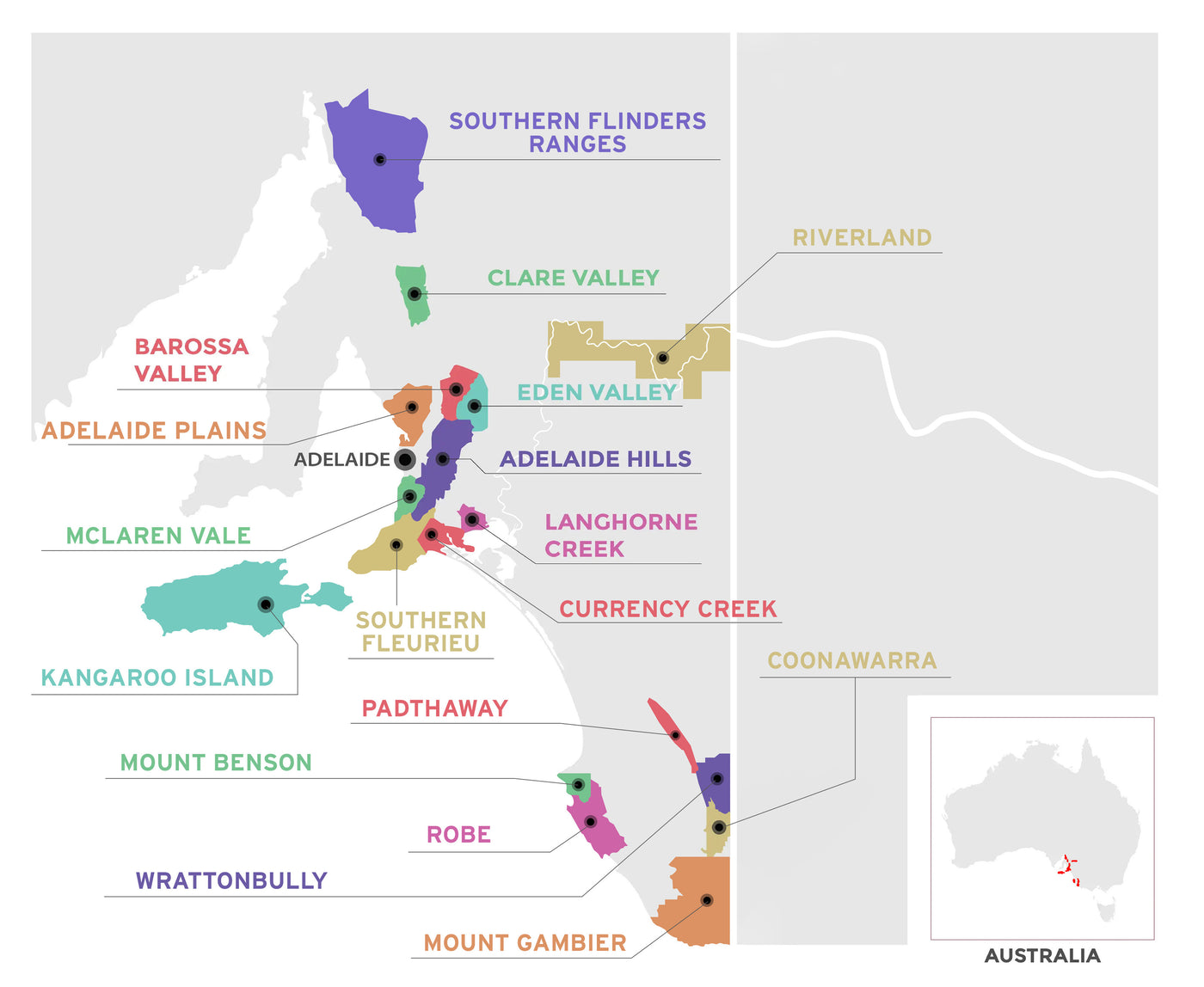

Penfolds Bin 95 Grange 2007
Style: Red Wine
Varieties: Shiraz (97%), Cabernet Sauvignon (3%)
Closure: Cork
Penfolds Bin 95 Grange 2007
Warehouse
34 Redland Drive
Vermont VIC 3133
Australia
Critic Score: 96
Alcohol: 14.5 %
Size: 750 ml
Drink by: 2045
Penfolds Bin 95 Grange Shiraz is Australia's most famous wine with a reputation for superb fruit complexity and flavour richness. It is the most powerful expression of Penfolds multi-vineyard, multi-district blending philosophy and is officially listed as a Heritage Icon of South Australia. One of the world's great wines.
"Richly flavoured palate, supple and elegant almost, yet still a massive mouthcoating presence showing an ilk of medium weight but offers clobbering concentration and intensity. A tightly wound wine, needs to open and reveal more. One of the true keepers though. Incredible focus and length.” Mike Bennie
The 2007 Penfolds Grange is a blend of 97% shiraz and 3% cabernet sauvignon from premium vineyards in the Barossa Valley, McLaren Vale and Magill Estate. The wine was matured for 21 months in American oak hogsheads (100% new).
"Deep crimson. Fragrant cedar, herb garden, black cherry and blackberry aromas with mocha, liquorice and grilled nut complexity. Rich, flavourful and sinewy with black cherry, blackberry and cedar flavours, fine-grained al dente textures, an underlying core of sweet fruit and balanced mocha oak complexity. A whack of chalky/gritty tannins at the finish with herb, cola and chinotto notes. Drinking well, but will improve with time. Peak drinking 2025 to 2060.
Expert reviews
"Dense, powerful and youthful wine that is surprisingly accessible, thanks to luscious sweet fruit and a sensitive structure of ripe tannins. Still has unrevealed depths. 2% Cabernet. 100% new oak." Bob Campbell MW, The Real Review - 96 points
"Full crimson, with a purple rim; a blend of 98% shiraz, 2% cabernet sauvignon that exudes power and authority; the bouquet is already complex, the American oak making an impact in its youth, the palate with multiple layers of mainly black fruits; the tannins, like the oak, need to soften and will do so well before the fruit starts to fade. Follows the Grange pattern with 21 months in the 100% new American oak in which it finished its fermentation. 14.5% alc; cork . Drink to 2030." James Halliday, Halliday Wine Companion - 95 points
"Opaque ruby. A heady, intensely perfumed bouquet evokes cherry compote, cassis, violet, pipe tobacco and smoky, vanillin oak. Deeply pitched dark fruit flavors show liqueur-like power, with floral pastille, licorice and spicecake nuances building in the glass. Tannins come up with air but are quickly absorbed by this wine's lush fruit. Smoky and sweet on the finish, which lingers with outstanding persistence." Josh Raynolds, Vinous - 95 points
"21 months in American Oak. Black and garnet coloured. Menacing to look at. Bouquet closed but revealing hints – lots of hints. Wild brambly black currants, cassis, floral notes, cedar, cigar box, the tool shed of exotic spice. Where complex bouquets wish they could go. Richly flavoured palate, supple and elegant almost, yet still a massive mouthcoating presence showing an ilk of medium weight but offers clobbering concentration and intensity. Jumble. Has punching tannins that build and molest and then drag the wine long, and into dusty spice and grip – fruit feels just that bit dried out. A tightly wound wine, needs to open and reveal more. One of the true keepers though. Incredible focus and length, but a wine in stasis. Hard to look at now, but do if you can. Drink: 2014-2039+.” Mike Bennie, The Wine Front – 94+ points
"The hallmark of Grange is assertiveness, and this release is that. It doesn't take a backward step. Its tannin peddles as hard as it can to thread its way into the fruit. Its oak - spicy, slippery, creamy – has settled beautifully into the dense, robust, blackberry-and-plum fruit. Some pepper notes too – unusually for a young Grange. I wouldn't call it complex but then, in Grange terms it's an infant. I guess I liked what I tasted of this release, but not enough to get me excited. It's not a poor Grange; it's big on delivery; but it's not a charming one either. All it's joy and charm will come, hopefully, when it's old." Campbell Mattinson, The Wine Front - 94 points
After the success of early sherries and fortified wines, founders Dr Christopher and Mary Penfold planted the vine cuttings they had carried on their voyage over to Australia. In 1844 the fledging vineyard was officially established as the Penfolds wine company at Magill Estate.
As the company grew, so too did Dr Penfold's medical reputation, leaving much of the running of the winery to Mary Penfold. Early forays into Clarets and Rieslings proved increasingly popular, and on Christopher's death in 1870, Mary assumed total responsibility for the winery. Mary's reign at the helm of Penfolds saw years of determination and endeavour.
By the time Mary Penfold retired in 1884 (ceding management to her daughter, Georgina) Penfolds was producing 1/3 of all South Australia's wine. She'd set an agenda that continues today, experimenting with new methods in wine production. By Mary's death in 1896, the Penfolds legacy was well on its way to fruition. By 1907, Penfolds had become South Australia's largest winery.
In 1948, history was made again as Max Schubert became the company's first Chief Winemaker. A loyal company man and true innovator, Schubert would propel Penfolds onto the global stage with his experimentation of long-lasting wines - the creation of Penfolds Grange in the 1950s.
In 1959 (while Schubert was perfecting his Grange experiment in secret), the tradition of 'bin wines' began. The first, a Shiraz wine with the grapes of the company's own Barossa Valley vineyards was simply named after the storage area of the cellars where it is aged. And so Kalimna Bin 28 becomes the first official Penfolds Bin number wine.
In 1960, the Penfolds board instructed Max Schubert to officially re-start production on Grange. His determination and the quality of the aged wine had won them over.
Soon, the medals began flowing and Grange quickly became one of the most revered wines around the world. In 1988 Schubert was named Decanter Magazine's Man of the Year, and on the 50th anniversary of its birth, Penfolds Grange was given a heritage listing in South Australia.
Despite great success, Penfolds never rests on its laurels. In 2012 Penfolds released its most innovative project to date - 12 handcrafted ampoules of the rare 2004 Kalimna Block Cabernet Sauvignon.
Two years later, Penfolds celebrated the 170th anniversary – having just picked up a perfect score of 100 for the 2008 Grange in two of the world's most influential wine magazines. Today, Penfolds continues to hold dear the philosophies and legends – '1844 to evermore!'.

South Australia
South Australian is responsible for more than half the production of all Australian wine. It is home to more than 900 wineries across 18 wine regions. The regions are Adelaide Hills, Adelaide Plains, Barossa Valley, Clare Valley, Coonawarra, Currency Creek, Eden Valley, Kangaroo Island, Langhorne Creek, McLaren Vale, Mount Benson, Mount Gambier, Padthaway, Riverland, Robe, Southern Fleurieu, Southern Flinders Ranges and Wrattonbully.
Many of the well-known names in the South Australian wine industry established their first vineyards in the late 1830s and early 1840s. The first vines in McLaren Vale were planted at Reynella in 1839 and Penfold's established Magill Estate on the outskirts of Adelaide in 1844.
South Australia has a vast diversity in geography and climate which allows the State to be able to produce a range of grape varieties - from cool climate Riesling in the Clare and Eden Vallies to the big, full bodied Shiraz wines of the Barossa Valley and McLaren Vale. Two of Australia's best-known wines, Penfolds Grange and Henschke Hill of Grace, are produced here. There is much to discover in South Australia for the wine lover.




